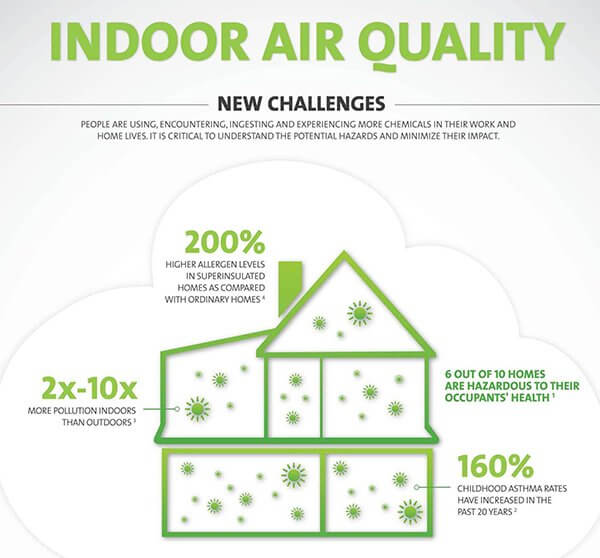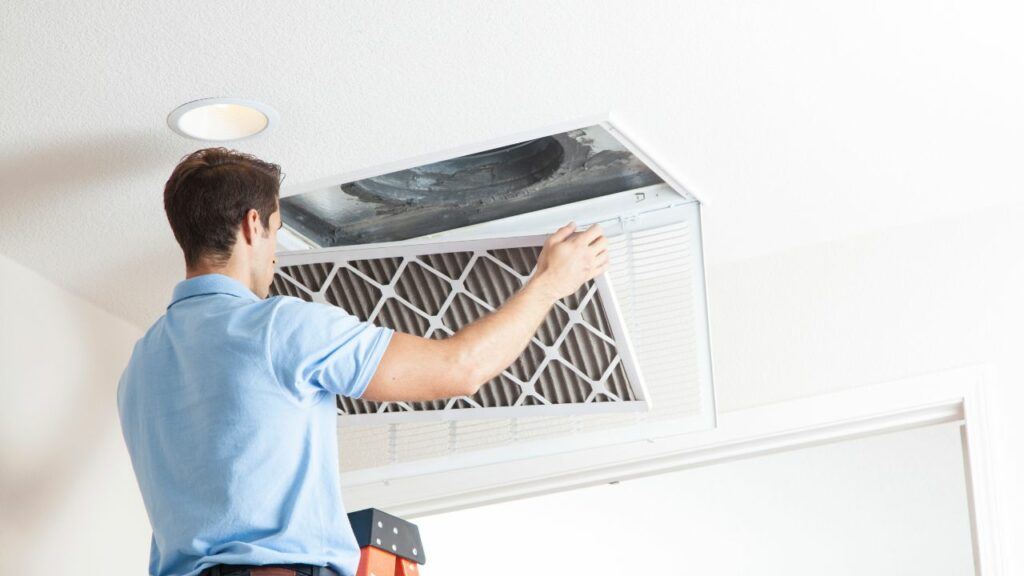World Health Organization recently revealed that 90% of the world’s population breathes hazardous air.
This might be because of emissions from industries, vehicle exhaust, wildfires, and open burning of garbage wastes found outdoors.
However, many of us are unaware that indoor air quality problem comes not just from these pollutants but can also be due to some common factors in enclosed spaces like an office.
Poor indoor air quality is one major office health issue that a lot of building owners and managers have taken for granted.
Compared to the air outside, poor indoor air quality hides behind the calming blow of office HVAC systems and the smell of air fresheners, making the hazard hard to determine and identify.
What is Indoor Air Quality, and Why Is It Vital?

According to Environmental Protection Agency or EPA, indoor air quality is the quality of air around structures and buildings, particularly as it relates to the comfort and well-being of workers and building occupants.
An extensive array of particular biological and chemical pollutants or toxins can make indoor air unsafe and the office uncomfortable – from viruses, bacteria, and fungi to emissions, smoke, and dust.
These toxins or pollutants create poor indoor air quality and can have short and long-term health effects, which include:
- Headaches
- Fatigue
- Nose, eye, and throat irritation
- Heart diseases
- Cancer
- Respiratory diseases
Allergic Reactions and Asthma Attacks
Also, air quality impacts productivity and output, and the proof is well-documented.
For instance, a Harvard study conducted in 2016 discovered that cognitive functioning scores were higher in those who worked in green office settings than in conventional office structures.
Common Reasons for Poor Indoor Air Quality in the Office
A lot of factors directly affect good indoor air quality; some are obvious, while others come in unexpected forms:
Building Location

Office tenants and business owners may be ignorant, but the place where the structure resides can manipulate the number of indoor air quality problems.
Workplaces near streets or highways are susceptible to smoke, and offices in an area with a high water table can be prone to chemicals that can fuse with the air.
Nearby renovations and constructions emit dust that can go inside the building and recirculate in vents.
Cleaning Solutions
Disinfecting, cleaning, and sanitizing products impact the IAQ and can boost air toxins. These products have substances that produce VOCs.
Volatile organic compounds are gases that, when inhaled, might cause throat irritation, nausea, headache, or kidney and liver damage.
Copiers and Printers
Significant amounts of ink from photocopying and printing machines also have volatile organic compounds, which can add up to the air toxins inside the office.
Copiers also produce ozone as a byproduct of how the machine functions to generate a copy.
Poor Ventilation Systems
The ventilation system affects indoor air quality to a greater extent. Allowing outdoor air to come in assists in reducing air pollutants or toxins and welcomes fresh air.
Of course, this assumes that the air outside at that point is optimal. On the other hand, as workplaces try to become efficient and productive, they also turn out to be more confined.
With windows closed permanently, the indoor air from the air conditioning system is isolated and is likely to recirculate, leading to bacterial and fungal growth in the ducting of the building, thereby adding to poor IAQ.
Shared Offices
Many modern workplaces at this point choose to share the area to reduce operational expenses.
While it might be a perfect way of saving money, it might take a toll on the workers’ health.
A huge number of workers occupying a single area emit heavier pollution, and the air filtration system in the workplace is not intended to accommodate those.
With this, such a system might not operate as planned, and air toxins tend to remain.
How to Combat Pollutants inside the Office Buildings
The causes mentioned are impossible and hard to avoid; there are some suggested ways to combat them, such as:
Maintain Cleanliness Inside the Office
Cleaning and sanitizing regularly and more frequently can help eliminate molds, dust, and other toxins that could go around the area.
Utilize natural and eco-friendly cleaning solutions to avoid VOCs and other damaging chemicals from keeping, particularly on touched areas or surfaces.
Ban Smoking

Avoid or ban tobacco smoke or cigarette smoke. Secondhand smoke impairs your respiratory health. Cigarette smoke can travel in ventilation systems and into other parts of the building, so a strict no-smoking policy is vital for indoor air quality management.
Cigarette smoke is also accountable for approximately 3,000 deaths due to lung cancer a year in non-smokers; this is according to the report published by the Environmental Protection Agency.
Change Air Filters on a Regular Basis

HVAC filters should be changed daily to avoid dust from recirculating back into the facility.
Blocked air filters upset free air movement as well as accelerate the accumulation of air toxins.
Changing and maintaining the HVAC system on a regular basis are the first steps to keeping the air inside clean.
If existing filters are not efficient at getting rid of particulates such as molds, odors, and other toxins, it is valuable to try the HEPA filter. You can also try filters with a higher minimum efficiency reporting value.
Try to Use Air Purifier

This is one effective way to improve indoor air quality (IAQ) However, air purifiers alone will not eliminate all the toxins in the indoor air.
On the other hand, if you have gone to the hard work to keep toxins out of your office, an air purifier can help a lot in reducing them further. There are a lot of air purifiers out there, so make sure to use one intended for office use. Read my article about the best air purifiers for small offices and cubicles.
Office Air Quality: Conclusion

Even if you may consider the outdoors with regard to air pollution, indoor air contaminants can have invisible but risky pollutants too. Making the workplace a green, breathable space can boost productivity, well-being, and employee satisfaction.
In a workplace, indoor air pollution might take into account but is not restricted to machinery emissions, cigarette smoke, cologne, as well as cleaning solutions. As a responsible individual, do what you can to avoid these indoor air quality issues

